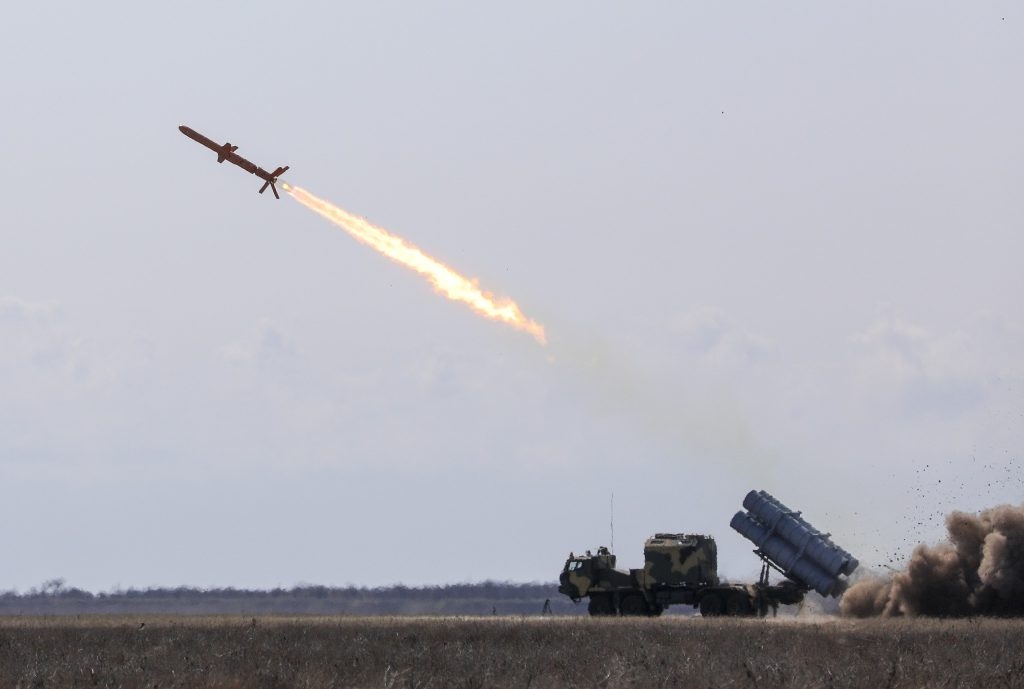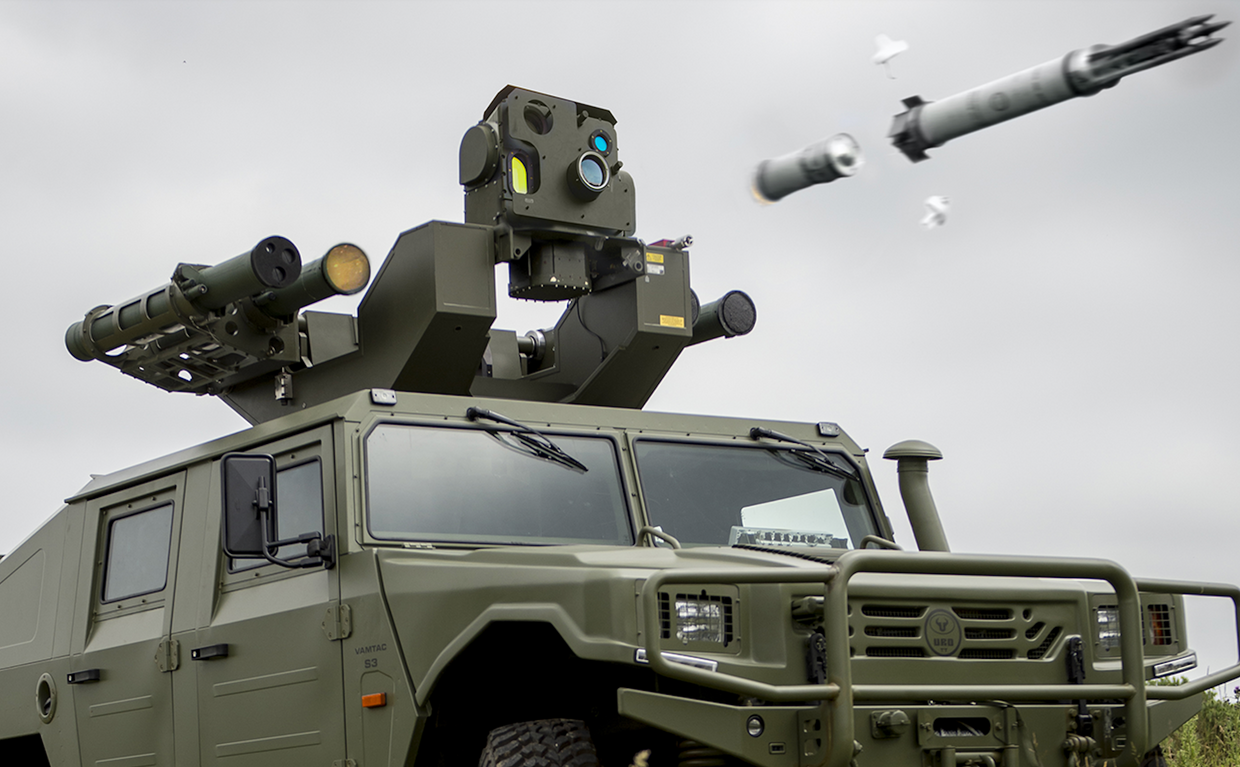Everything we know about Ukraine’s new Palianytsia missile-drone

With much fanfare, Ukraine has announced a new weapon – the Palianytsia missile drone.
The first images of the Palianytsia were shown in a video President Volodymyr Zelensky posted on X on Aug. 25, following his announcement the day before about the new weapon's first successful combat use.
"Today was the first, and successful, combat use of our new weapon. A completely new class of weapon — the Ukrainian missile-drone Palianytsia," he said.
"This is our new method of retaliation against the aggressor. The enemy has been struck."
What exactly is the Palianytsia?
Experts who spoke to the Kyiv Independent are divided in their assessments.
The Palianytsia has been described as both a missile-drone and a rocket-drone, but defense expert Andrii Kharuk said it is essentially a lightweight cruise missile.
“It is a cruise missile, an ordinary, classic cruise missile because a cruise missile is an unmanned aerial vehicle (UAV) with a rocket or, in this case, turbojet engine,” said Kharuk.
“According to what we can see from the presented images, Palianytsia is a relatively small missile. Its explosive charge is about a few tens of kilograms, not 400 or more kilograms as you find in full-size cruise missiles.”
But Federico Borsari, a Leonardo Fellow at the Center for European Policy Analysis (CEPA), said the Palianytsia should actually be defined as a high-speed, one-way attack drone.
"Typically, missiles fly at a higher speed compared to what we know about the Palianytsia," he said, adding that he would call it “a one-way attack drone with some missile characteristics."

"From what we know, it has a more or less 20-kilogram fragmentation warhead or other type of warhead, and I assume it has a flying range of between 500 and 700 kilometers.”
Oleksandr Dmitriev, advisor on unmanned automated systems and IT to the Commander of the Ground Forces of the Armed Forces of Ukraine, said the Palianytsia can be compared with a cruise missile, but with some atypical features.
"You can compare it with missiles, but missiles have slightly different control mechanisms," he said.
“The line between a cruise missile and this drone is very thin. The target of a cruise missile cannot be corrected during the flight, but a drone’s can. That is basically the difference.”
What do we know for certain about the Palianytsia?
All three experts agree that the technology in the Palianytsia is not new, but that Ukraine has managed to combine existing technologies with which it was familiar and create a new weapon that could be used effectively against targets far into Russian territory.
“The lifting wing technology, electronic control technology, and jet-powered engine have been around for a long time. All these technologies have been combined to create an innovative product,” said Dmitriev.
While most of the weapon’s characteristics are classified, it is known that the Palianytsia is powered by a turbojet engine and is launched from a ground platform, rather than from an aircraft or ship.
The exact range of the weapon has not been revealed, but according to the video Ukraine presented publicly, the Palianytsia is capable of reaching 20 airfields deep inside Russia.
One of these is the Savasleyka airbase, located nearly 665 kilometers (413 miles) away from the Ukrainian border.
This airbase was one of four struck during the largest aerial attack against Russia so far on Aug. 14. Ukraine did not disclose what equipment was used during the attack.
“Ukraine had already developed some other jet-powered one-way attack drones before, some of them have not been named yet," Borsari said, adding that "some have been used sparingly against targets in Russia in previous months."
What do we know about the Palianytsia's development?
Borsari said that despite the lack of technological novelty in the drone, the speed of its development has been impressive.
Ukrainian officials claimed the Palianytsia took one and a half years to go from blueprints and plans, to its first successful combat use.
“In the West, for this kind of weapons it can sometimes take years from initial development to first combat testing," Borsari said.
"So for Ukraine, this (period of development) is really admirable and impressive."
Ukraine’s Digital Transformation Minister Mykhailo Fedorov told the Associated Press (AP) on Aug. 27 that production of one unit is less than $1 million.

This is cheaper than the average cruise missile — a Russian Kh-101 costs around $13 million, for example — but more expensive than a Russian Shahed-136 kamikaze drone, which can be produced for as little as $50,000, though they are propeller-driven and therefore far slower.
Why does Ukraine need Palianytsia?
Ukraine has been prohibited from using some Western-supplied weapons to strike deep within Russia, prompting Kyiv to develop its own alternatives, in particular, to take out the aircraft that launch mass missile attacks against Ukrainian cities.
A weapon fast enough to attack targets such as aircraft located far inside Russian territory before they can disperse is badly needed, Borsari said, adding the missiles currently available to Ukraine are not up to the job.
“The Palianytsia is definitely something Ukraine needed and did not have before," he said.
“The Neptune (Ukrainian-made subsonic cruise missile) does not have a sufficient range, the Tochka-U (Soviet-made tactical ballistic missile) has limited range and is also a very outdated missile that Russia can easily intercept with their air defense systems."
According to experts, the Palianytsia will not be a magic wand that alone can turn the course of the war in Ukraine’s favor.
However, in the case of its mass production and use in combination with other types of weapons, Ukraine could be able to effectively strike back against Russia’s war machine on Russian territory.
“Terrorist attacks (by Russia) continue, so if we are not provided with weapons of sufficient range, we have no choice but to create these weapons ourselves,” Kharuk said.
A few days after the Palianytsia announcement, Zelensky also revealed Ukraine had carried out a successful test of its first domestic-made ballistic missile.
“This is the exact kind of combination Ukraine needs to threaten important targets deep inside Russia,” Borsari said.












